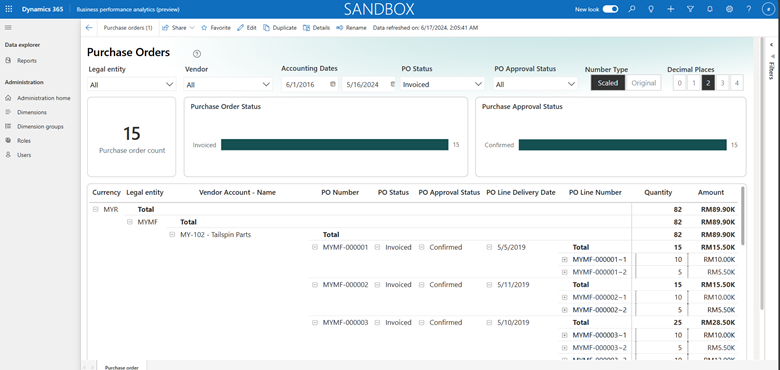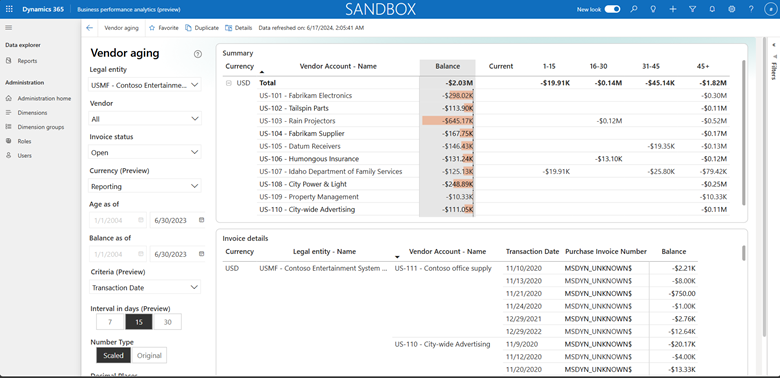Use Procure to Pay data models to report and gain insights
| Enabled for | Public preview | General availability |
|---|---|---|
| Users by admins, makers, or analysts |  Apr 28, 2023
Apr 28, 2023 |
 Oct 30, 2024
Oct 30, 2024 |
Business value
The Procure to Pay data model in Business performance analytics enhances your procurement processes by streamlining reporting, ensuring accurate payment processing, and providing detailed financial visibility. This feature helps reduce errors, improve efficiency, and offer valuable insights into spending and vendor performance, ultimately driving better financial management and strategic decision-making.
Feature details
The Procure to Pay data model in Business performance analytics delivers substantial business value by providing a comprehensive view of procurement processes, ensuring accurate and efficient payment handling. By supporting key business processes such as purchase requisitions, purchase orders, product receipt, 3-way matching, invoices, taxes, charges, payments, and the Accounts Payable subledger, the Procure to Pay data model enhances the accuracy and timeliness of procurement data, facilitating better strategic planning and decision-making.
The Procure to Pay data model delivers granular data that enables users to create custom reports and perform detailed analysis, incorporating various dimensions across the procure to pay value chain. This capability allows businesses to gain deeper insights into procurement performance, supplier behavior, and cost trends. With dimension-based analysis, organizations can easily identify procurement patterns, optimize supplier contracts, and enhance sourcing strategies, leading to cost savings and improved supplier relationships.
By streamlining the entire procure to pay process, the Procure to Pay data model improves operational efficiency, reduces errors in order processing and payment handling, and ensures timely fulfillment of procurement needs. This enhanced efficiency contributes to better cash flow management, reduced days payable outstanding (DPO), and stronger financial stability. Additionally, the Procure to Pay model supports effective tax management and accurate charge allocation, further improving financial compliance and reporting.
Furthermore, the comprehensive visibility provided by the Procure to Pay data model strengthens supplier relationships by enabling prompt and accurate order fulfillment and payment processing. This reliability fosters trust and collaboration with suppliers, driving long-term partnerships and operational excellence. By leveraging the Procure to Pay data model, businesses can optimize their procurement processes, improve financial performance, and achieve sustainable growth and competitive advantage.

